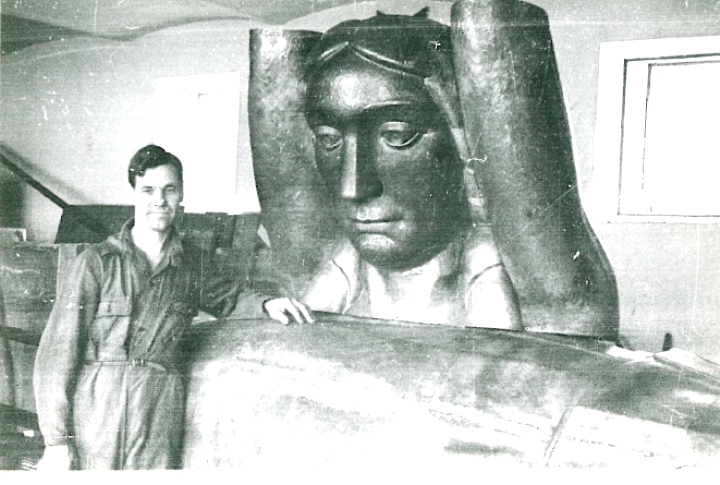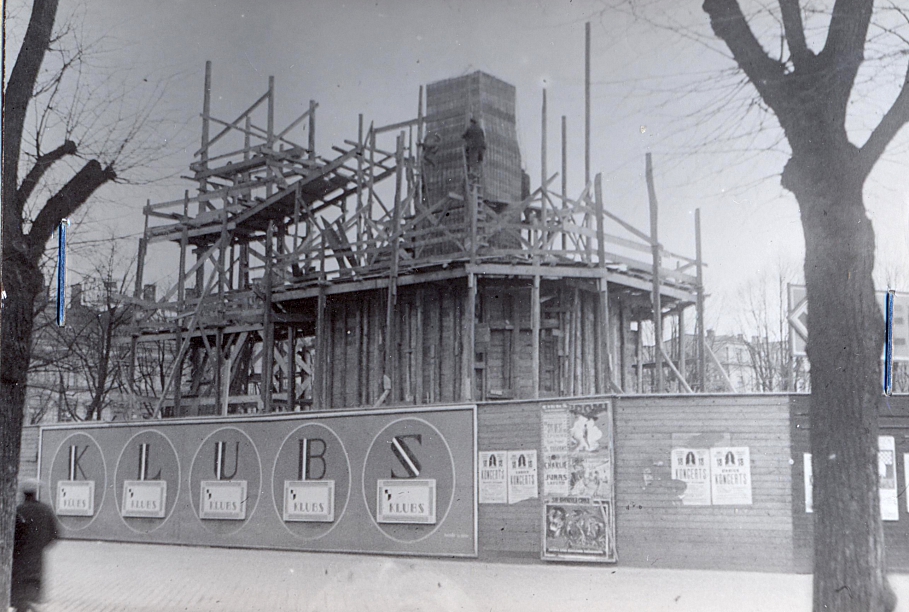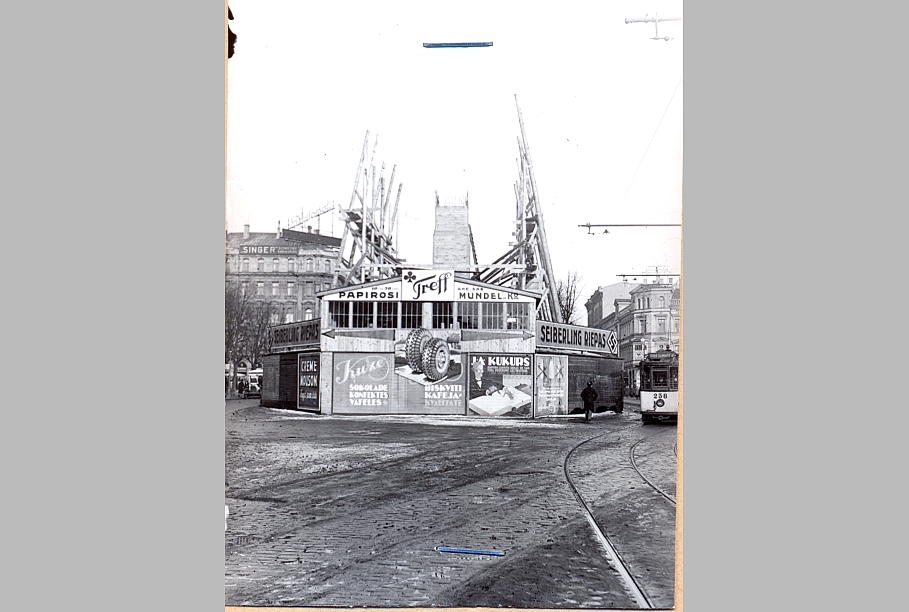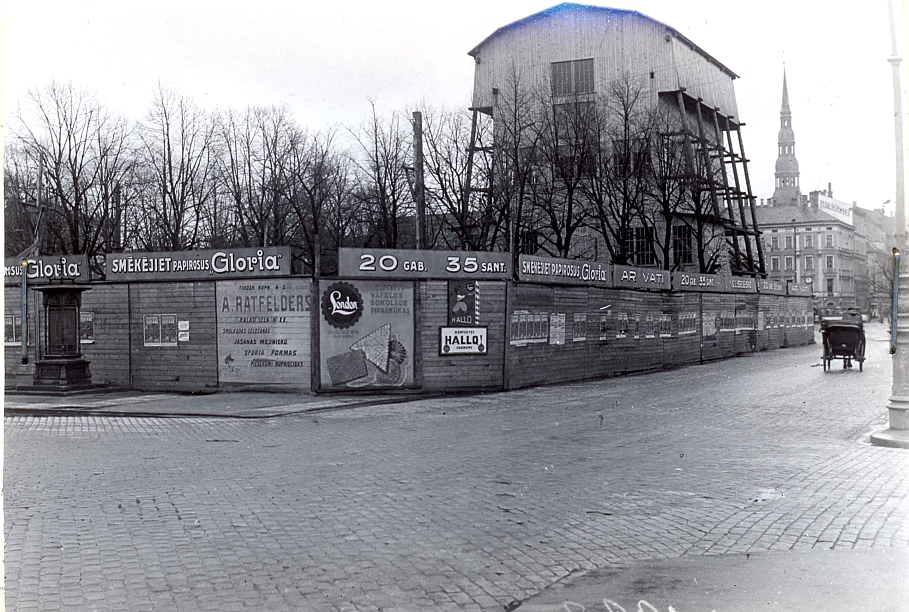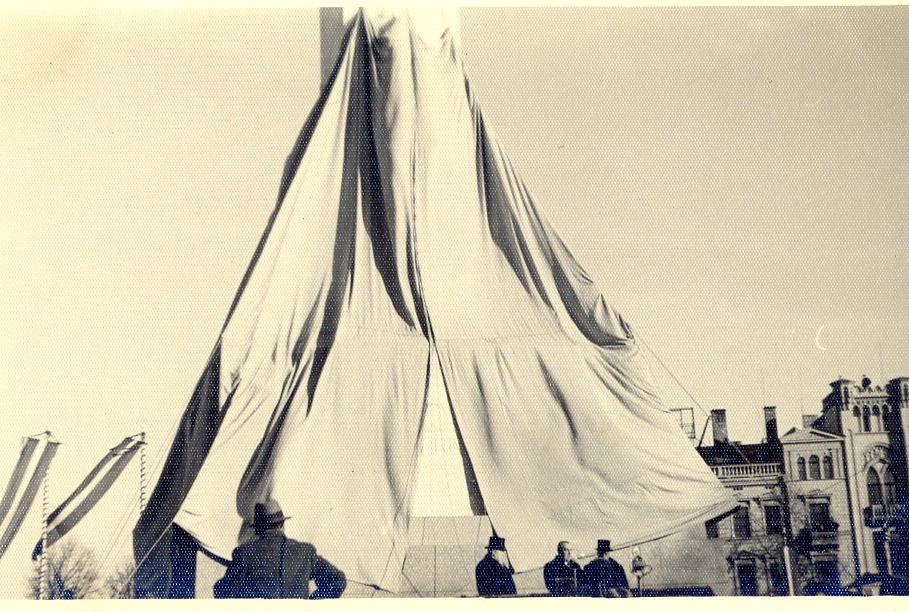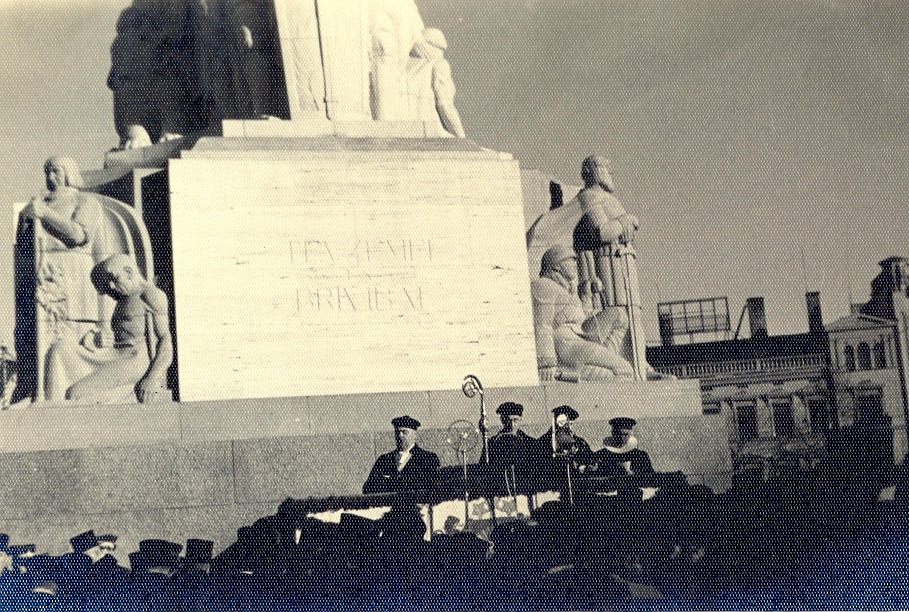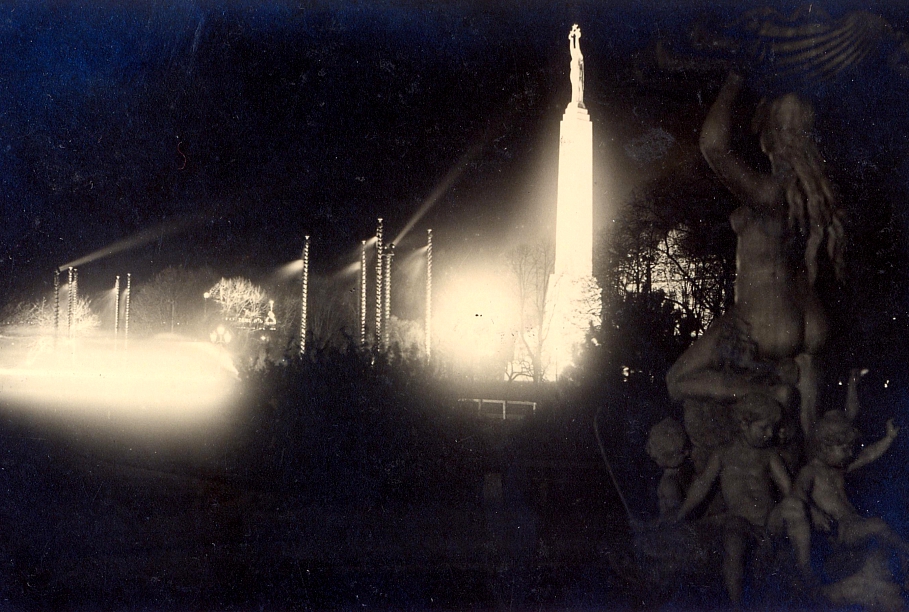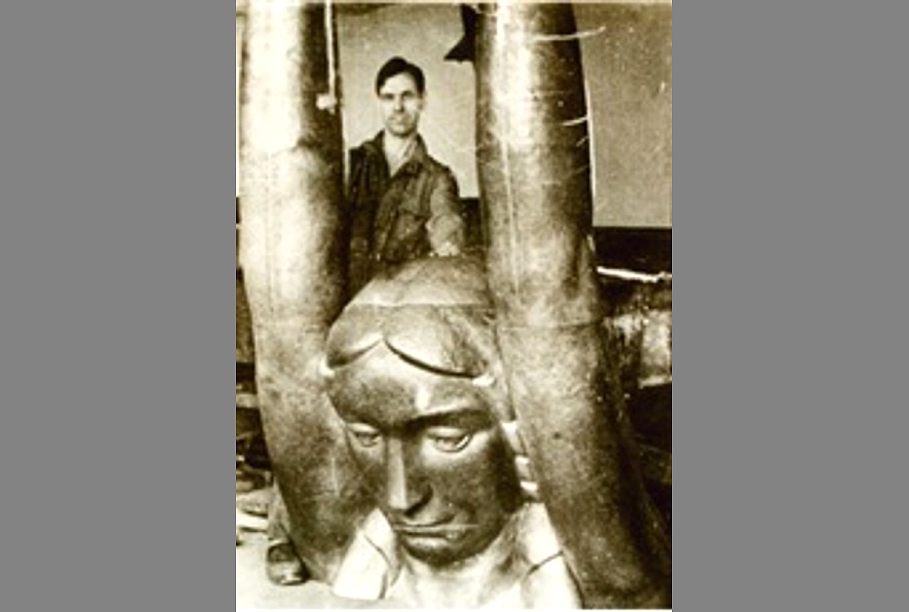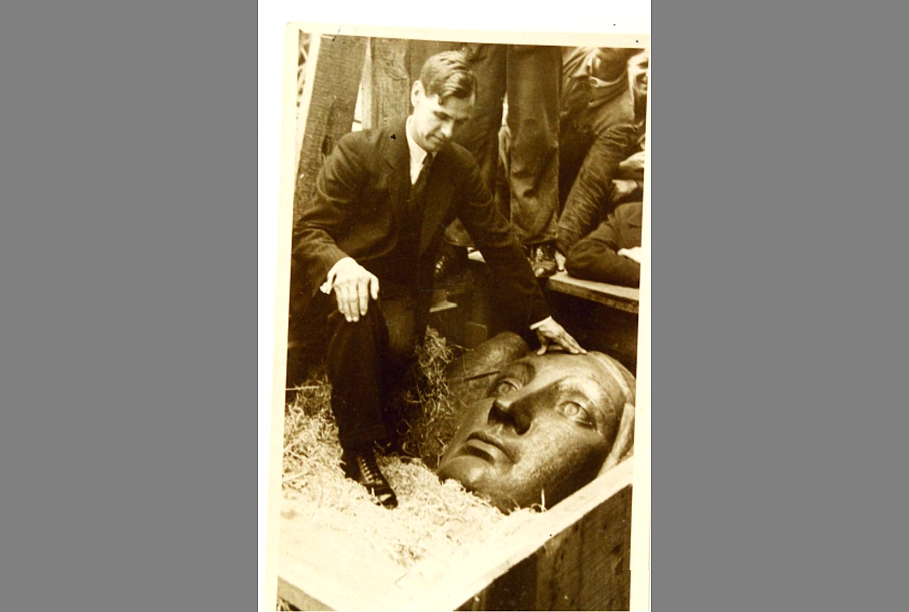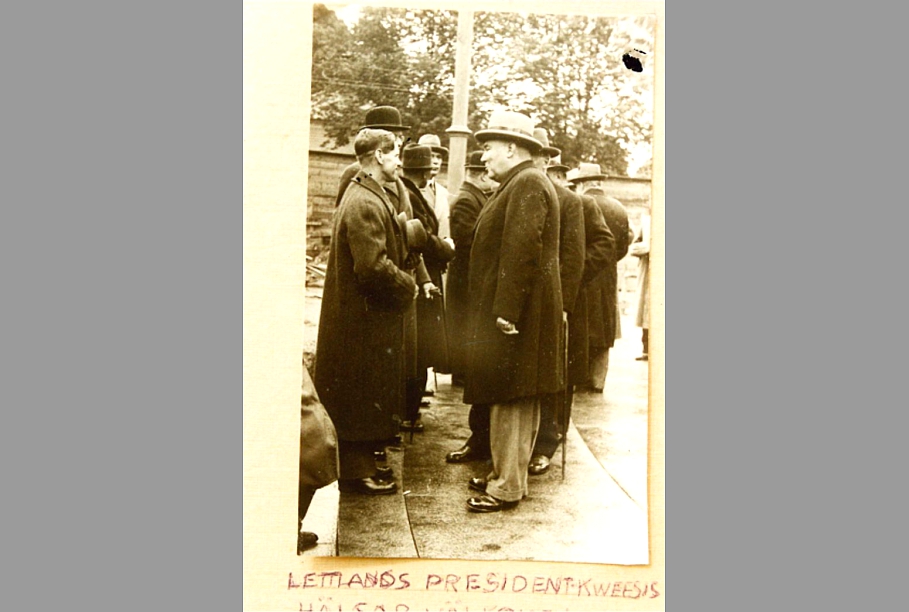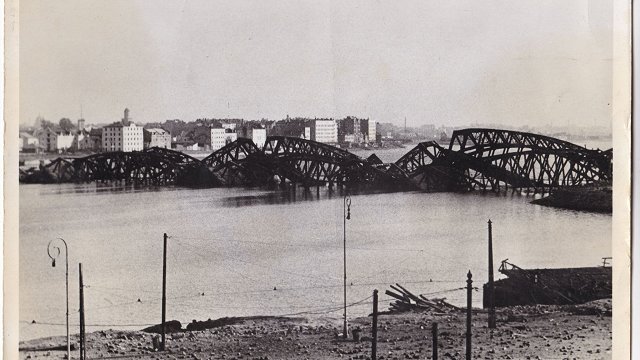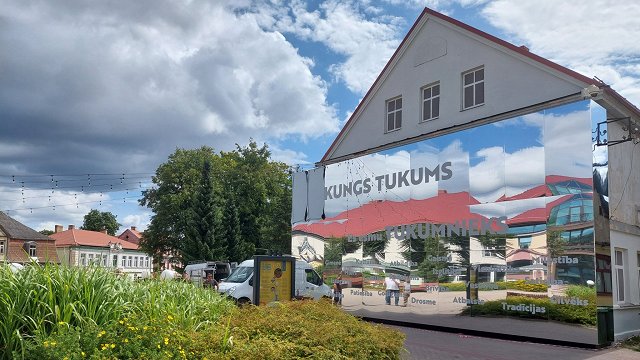Latvian Radio's Māra Rozenberga takes readers on a tour of the material, historic and symbolic dimensions of Latvia's most representative memorial.
The monument's message and the endless striving upwards has inspired generations even prior to its being built. The Freedom Monument was funded by private donations, and in Soviet times it was either ignored or – at least we think so now – misinterpreted rather comically.
The Freedom Monument – sometimes affectionately referred to as Milda – continues to be a source of inspiration, and at that one that has witnessed all of the most important moments of the Latvian state.
Privately funded
A narrow metal staircase inside the monument climbs some 40 meters where two hatches open up a unique view to Rīga and its historically important parts – embassies, church steeples, ships docking at the harbor. While the Opera, The Academy of Sciences and the Television Tower lie on the left.
The video from the opening ceremony on November 18, 1935 shows the square full of people and the monument still covered with a cloth.
"Dear participants of this gathering, I congratulate you on this state celebration! Everyone who is here, and everyone who is living this moment in their hearts and thoughts. The nation has built this monument with funds willingly donated. I wish [the monument] to live as long as the sun will shine over the earth!" said President Alberts Kviesis, addressing the folk.
A whopping three million lats were donated in four years for building the Freedom Monument, at a time when a beginning helper's wage was about ten lats a month.
An idea almost as old as the state
The idea to create a monument for the Latvians' newfound freedom dates back to 1922 when at one point 300,000 lats were earmarked for the cause in the state budget, but the money was found too much of a strain.
"After the Independence war the situation was very difficult, and a part of society, including some politicians, thought that perhaps now isn't the right moment to spend the thin finances of the state on such causes. [..] And for eight years, a place couldn't be found for [the monument]," said Juris Ciganovs, historian of the Latvian War Museum.
The Freedom Monument was erected where Riga's prior central monument, that of Peter the Great, had stood. After the war, only the pedestal of the former monument had remained, and it was used for posters.
Alternative monuments
There's a passage leading some four meters down below the monument, Mārīte Šenberga, a representative of the Rīga Monuments Agency, showed Latvian Radio a hatch to the underground where the base arch of the previous monument could be seen.
A copper time capsule with the documentation, newspapers, medals, and money was left there. Then the first rock was cemented and works at the monument began, said Šenberga.
The construction was lead by Kārlis Zāle and his assistant Ernests Štālbergs. Most of the sculptures in the monument were built at the workshop on Satekle street, and then lead here, Šenberga told Latvian Radio.
There had been various contests for the design of the Freedom Monument, and Zāle participated in them with radically different ideas - monumental gates of freedom, and in the other contest a figure of the mythical figure Lāčplēsis on a massive pedestal.
Zāle's last entry was chosen over those of other grands, and there were quite a few. Art historian Ruta Čaupova repeated Zāle's words to Latvian Radio: "I want to build a monument that would be understandable to everyone in all eras."
"Perhaps that's a mantra that has protected the monument on some level. As the artistic value was such as it really made it through all the times even though perhaps there were forces that wanted to change it or to do something to it. But they couldn't make themselves do it.
And somehow this Zāle's work, this great monument that's almost an altar in our state life was saved," said Čaupova.
The conception of the monument is aiming upwards – through state values and ideals to liberty and the starts. A total of 13 sculpture and relief groups in white travertine and red and grey granite. At the base – the Latvian riflemen, Song and Dance Festival, work, family, science; higher – mythical beings and the yearnings of the nation: chain breakers, Lāčplēsis, Vaidelotis [a pagan priest], and Latvia.
Curiously enough, sculptor Kārlis Zāle also added himself to the monument.
"In each of the character groups there's one of a photographic resemblance. There are a total of 56 portraits that Zāle had taken from his associates and those that worked here. But one thing is certain.
In the sculpture group left from the Tēvzemei un brīvībai [To freedom and to fatherland] graph there's one that has knelt and has a totally different haircut from the rest. And that is Kārlis Zāle himself," Šenberga explained.
An mysterious "who is she?"
The iconic copper Freedom statue was made in Stockholm by Ragnar Myrsmeden. It became the largest work of the sculptor, and the press at his home was proud about it in the 30s.
Art historian Ruta Čaupova has held a correspondence with the Myrsmeden family, and showed Latvian Radio unique photographs from the artist's private archive where he is posing by the freshly cut sculpture, ships it to Rīga in boxes, and greets the Latvian president at its unveiling. Myrsmeden had only eight months to finish the nine-meter towering Freedom figure, which made it to Rīga in time with the three stars. It was welded and patinated to achieve its characteristic green.
While the prototype for the woman of the Freedom figure has not been found. There are stories that it's the wife of Kārlis Zāle, or Marta Skulme, a sculptor and the mother of painter Džemma Skulme.
How could it stand the test of time?
After it was unveiled, the Freedom Monument was surrounded by tram tracks, and under the Soviet occupation it served as a trolley terminal.
It could withstand the pressure of the transport - and storms, like the one in 1969 when church towers crumbled and ships were thrown into bridges - only because it was built so masterfully, said restaurator Sarmīte Gaismiņa.
In the 40s, the monument was proposed to be demolished and to reconstruct the monument to Peter I. It is said that Vera Mukhina, the renowned Soviet sculptor, had saved the monument by appealing to its artistic value. At least that's what her son has said, but there's no written testimony to this claim.
"Perhaps it was the fear of the Soviet nomenclature, from the dissent of the people if the monument were started to be demolished. Though this is not necessarily true. Perhaps the answers are to be found in the archives of Moscow, which we cannot access right now," historian Juris Ciganovs told Latvian Radio.
The Soviets were quick to cash in the words of Zāle - "for everyone in all eras" - to use it as a symbol for their own ideology. For example, the monument's riflemen were renamed liberators from German fascism, but the Freedom sculpture was said to be Mother Russia who has put the three Baltic states into the spotlight.
Given the fact that people more or less had to ignore the very prominent monument, it is surprising that in the late 70s a restoration was okayed and even the stars were gilded once again. It was restored once more in the late 90s, mostly from private donations.
During the restoration, a bullet from the early independence clashes of the 90s was found in the monument.
The Honor Guard of the National Armed Forces protect the monument every day from 10 AM to 4 PM, changing every hour with exceptions when the elements are particularly unfavorable.
While when the guard have finished their stay, the "kindred spirits" of the Rīga Monuments Agency start tidying up – rearranging the flowers, cleaning the leaves and shoveling the snow.
The monument is due for another thorough cleaning, according to the main restorer of the monument agency Ivo Graudums. Some €150,000 is needed for the task, but it is not yet known whether the funds will be found in the city budget.
For those who want, like Latvian Radio's correspondent, to explore the interior of the monument, would have to turn to Guntis Gailītis, the head of the Rīga Monuments Agency, with a written request. Visitors are welcomed on festive occasions from May 4 to November 18.
On November 18, the monument will become the central figure of the Staro Rīga (Rīga is shining) lights festival. There's also an exhibition on show by the Cabinet of Ministers with closeups of the monument.
